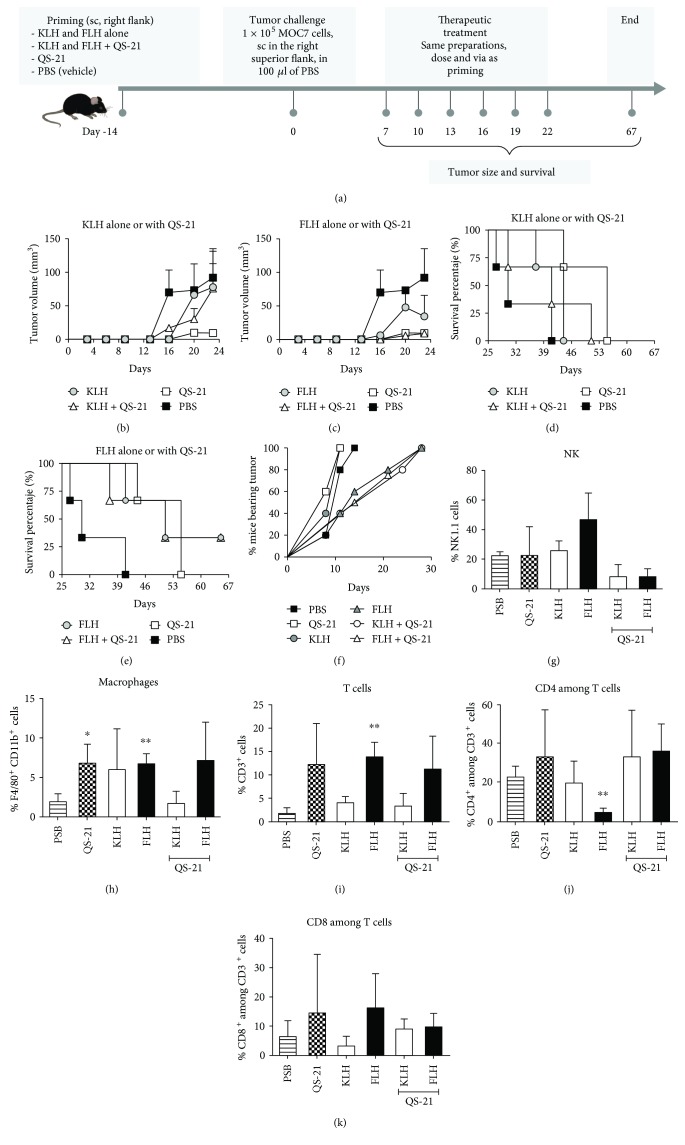Figure 2.
Antitumor effects of KLH and FLH in combination with QS-21 adjuvant in a heterotopic mouse model of oral cancer. (a) Experimental scheme. Three C57BL/6 mice were primed subcutaneously in the superior right flank (day −14) with the following treatments: 100 μg of hemocyanin alone in 100 μl of PBS (vehicle) or 50 μg of each hemocyanin in combination with 10 μg of QS-21 in a total volume of 100 μl of PBS. Controls were 10 μg of QS-21 alone in 100 μl of PBS and 100 μl of PBS. For the tumor cell challenge (0 days), the mice received 1 × 105 MOC7 oral cancer cells subcutaneously in the superior right flank. After 7 days, the animals received an intralesional injection identical to the priming dose, and these treatments were then repeated 5 times at intervals of 3 days. (b) Effects of KLH alone or in combination with QS-21 on tumor growth. Data are shown as means ± SEM of one experiment with n = 3 mice per group; P not significant, two-tailed Student's t-test. (c) Effects of FLH alone or in combination with QS-21. (d) Effects of KLH alone or in combination with QS-21 on mouse survival. (e) Effects of FLH alone or in combination with QS-21. (f) Kinetics of tumor appearance in mice during an experiment similar to that described in (a), designed to analyze the tumor infiltration of immune cells. The percentage of mice bearing tumors was determined visually and by palpation. Quantitative analysis of tumor infiltration based on the numbers of NK1.1+ (g), F4/80+ (h), CD3+ (i), CD4+ (j), and CD8+ (k) cells in single-cell suspensions derived from the tumors was performed on day 30 of the bioassay. The results are expressed as the percentage of total viable immune cells. The data shown represent means ± SEM of a representative experiment, with n = 3 mice per group. ∗P < 0.05 and ∗∗P < 0.01, two-tailed Student's t-test.

